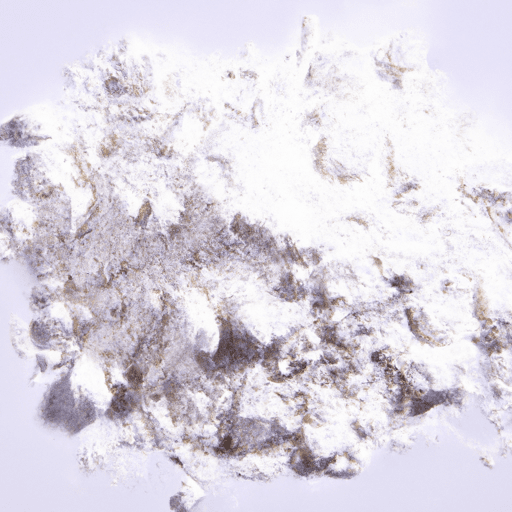The Magic Ingredient: Baking Powder
If you’ve ever tried your hand at baking, you’ve likely come across the magical ingredient known as baking powder. This versatile powder is a staple in the world of cooking, adding lightness and lift to a variety of baked goods. But what exactly is baking powder and how does it work its magic in the kitchen? Let’s dive in and uncover the mysteries of this essential ingredient.
What is Baking Powder?
Baking powder is a leavening agent, which means it helps dough and batter rise by creating bubbles that give a light and fluffy texture to baked goods. Unlike yeast, which requires time to ferment, baking powder works instantly and is widely used for quick and convenient baking. It is composed of three main ingredients: baking soda, an acid (such as cream of tartar or sodium aluminum sulfate), and a moisture-absorbing agent (usually cornstarch). When these components are combined, they create a reaction that releases carbon dioxide gas, causing the dough or batter to rise.
Taste and Common Uses in Cooking
Now that we know what baking powder is and how it works, let’s explore its taste and the many ways it can elevate your culinary creations. Unlike yeast, baking powder doesn’t contribute any distinct flavor to your dishes. Its purpose is to lighten the texture and create a tender crumb.
Baking powder is a vital ingredient in a wide array of recipes, particularly those that call for a light and airy texture. Muffins, cakes, pancakes, biscuits, and quick breads all benefit from the addition of baking powder. It helps create the perfect rise and ensures a fluffy, well-structured final product. Even some savory dishes like cornbread and dumplings rely on the power of baking powder to achieve that tempting lightness.
Nutritional Value
From a nutritional standpoint, baking powder doesn’t have significant direct health benefits. It is mainly used for its culinary properties rather than its nutritional content. However, it is important to note that excessive consumption of baking powder can lead to an imbalance in the body’s pH levels due to its high sodium content. As with all ingredients, moderation is key to maintaining a balanced diet.
History and Fun Facts
The story of baking powder begins in the 19th century. Before its invention, cooks relied on yeast or other natural leaveners to get their baked goods to rise. However, yeast required time and careful nurturing. In 1843, British chemist Alfred Bird developed the first commercial baking powder, revolutionizing the world of baking.
Interestingly, baking powder was inducted into the National Inventors Hall of Fame in 2006 for its significant impact on the culinary world. Today, it remains a staple in kitchens across the globe, allowing both novice and experienced bakers to create delectable treats with ease.
Baking powder may seem like a simple ingredient, but its ability to transform flat and dense dough into beautifully risen masterpieces is truly remarkable. From its role in creating fluffy pancakes to its influence on tender cakes, baking powder adds that touch of magic to your baking endeavors. So, whether you’re a seasoned baker or just getting started, make sure to keep this indispensable ingredient on hand. Your taste buds will thank you for it!
Origin and History:
- Baking powder is a leavening agent that is commonly used in baking. It was first introduced during the 1840s by Alfred Bird, a British chemist.
- The need for a convenient leavening agent arose when people were searching for an alternative to yeast, which was sometimes unreliable and had a long fermentation process.
- The first commercial brands of baking powder were developed and marketed in the United States in the late 1860s.
Common Uses:
- Baking powder is primarily used in baking to make dough or batter rise by creating carbon dioxide gas bubbles when combined with moisture and heat.
- It is a key ingredient in a variety of baked goods such as cakes, muffins, cookies, and quick breads.
- Baking powder is often preferred in recipes that do not call for an acidic ingredient, as it already contains both an acid (cream of tartar) and a base (baking soda).
Nutritional Benefits:
- From a nutritional standpoint, baking powder does not provide any significant nutritional benefits as it is mainly used as a leavening agent and not consumed in large quantities.
- Baking powder itself is low in calories and fat, and it does not contain any protein, fiber, or vitamins.
Unique Properties:
- Baking powder is a mixture of an acidic compound (usually cream of tartar) and a base (usually baking soda).
- Unlike baking soda, which requires an acidic ingredient (such as lemon juice or yogurt) to produce carbon dioxide and leaven baked goods, baking powder is a complete leavening agent by itself.
- There are different types of baking powder, including single-acting and double-acting. Single-acting baking powder reacts immediately upon contact with moisture and heat, while double-acting baking powder has a two-stage reaction, first when it is mixed with liquid, and again during baking.
Overall, baking powder plays a crucial role in baking as a convenient and reliable leavening agent, ensuring light and fluffy results.




Use the share button below if you liked it.
It makes me smile, when I see it.